Gorget
Gorget is in Armour.
Gorget. Armoured throat protection that replaced the camail in the late 14th Century. From the French 'gorge' meaning throat.
After 22 Mar 1354. Monument to Edmund Cornwall (deceased) at St Mary's Church, Burford [Map]. Early Plate Bascinet and Gorget Period. Feet resting on a Lion. Curious laminated gorget.
Edmund Cornwall: Edmund Cornwall and Elizabeth Brampton were married. He a great grandson of King John "Lackland" of England. Around 1280 he was born to Richard Cornwall and Joan Fitzalan at Asthall Leigh, Oxfordshire. He a great grandson of King John "Lackland" of England. On 22 Mar 1354 Edmund Cornwall died at Cleobury Mortimer, Shropshire. He was buried at St Mary's Church, Burford.
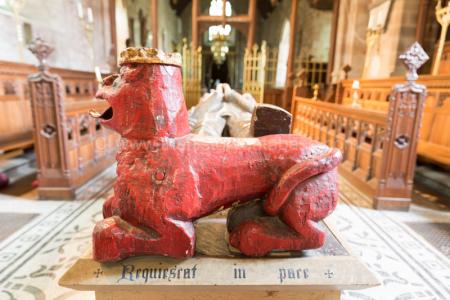
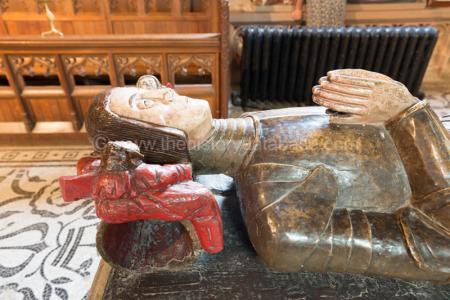
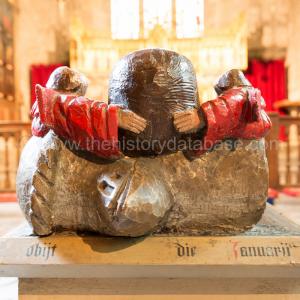
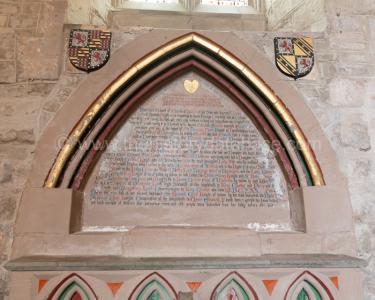
After 1418. Monument to John Harrington 4th Baron Harington (age 34) and Elizabeth Courtenay Baroness Bonville and Harington. Finely carved alabaster. Monument of the Early Plate Bascinet and Gorget Period. Decorated orle and the plate gorget (throat protection), Hip Belt and the Horses Head Crest. She wearing a Crespine Headress. Chunky Lions Mane. Angels Supporting Pillow.

John Harrington 4th Baron Harington:
In 1384 he was born to Robert Harrington 3rd Baron Harington and Isabel Loring Baroness Harington.
On 21 May 1406 Robert Harrington 3rd Baron Harington died at Aldingham Furness, Lancashire. His son John Harrington 4th Baron Harington succeeded 4th Baron Harington.
On 11 Apr 1418 John Harrington 4th Baron Harington died. He was buried in the Lady Chapel of St Dubricius Church, Porlock. His brother William Harrington 5th Baron Harington succeeded 5th Baron Harington. After 17 Feb 1461 John Harrington 4th Baron Harington and Elizabeth Courtenay Baroness Bonville and Harington were married. She by marriage Baroness Harington. She the daughter of Edward "Blind Earl" Courtenay 11th Earl Devon and Maud Camoys Countess Devon. She a great x 3 granddaughter of King Edward "Longshanks" I of England.
After 17 Feb 1461 John Harrington 4th Baron Harington and Elizabeth Courtenay Baroness Bonville and Harington were married. She by marriage Baroness Harington. She the daughter of Edward "Blind Earl" Courtenay 11th Earl Devon and Maud Camoys Countess Devon. She a great x 3 granddaughter of King Edward "Longshanks" I of England.
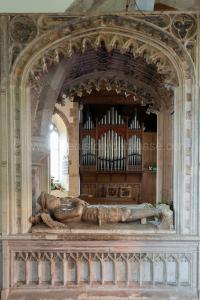
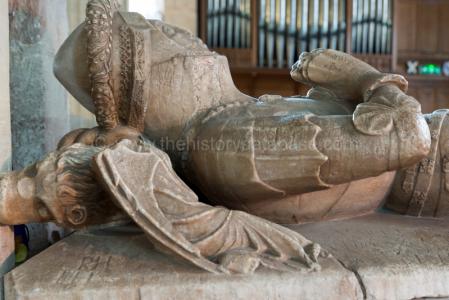
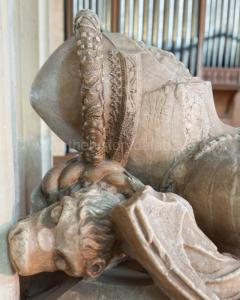
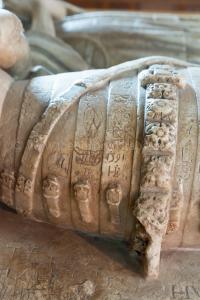
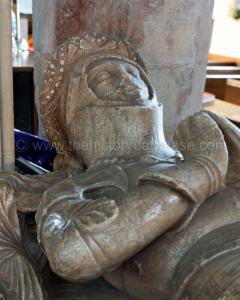
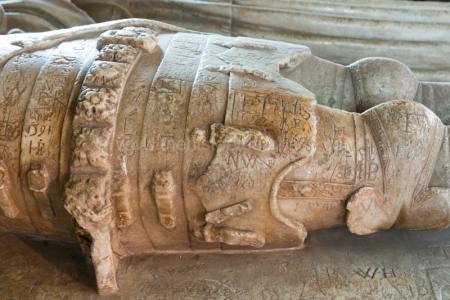
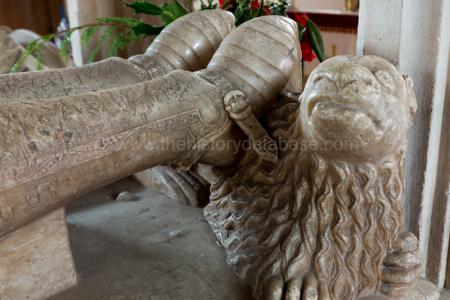
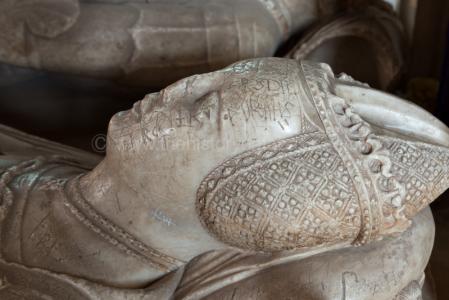
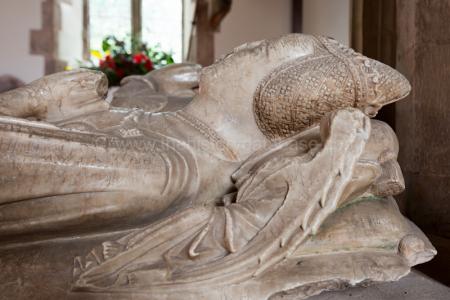
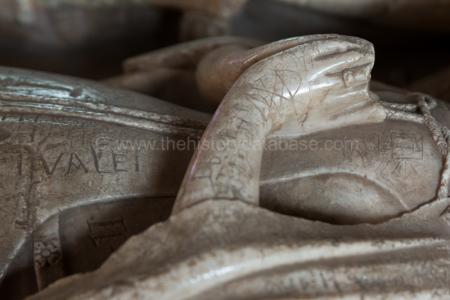
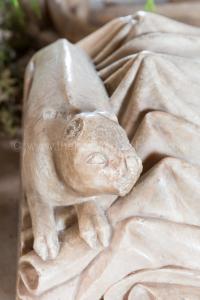
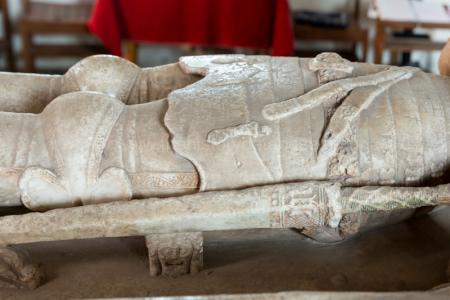
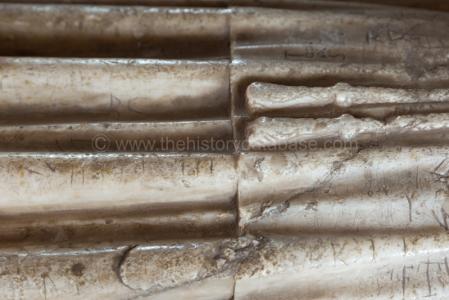
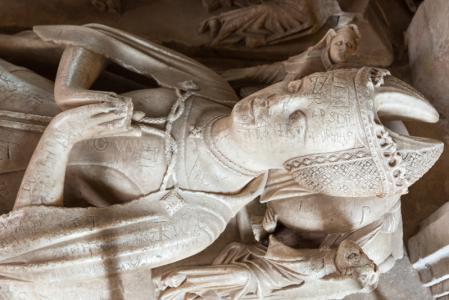
After 22 Mar 1421 John Ros 7th Baron Ros Helmsley (age 24) was buried at Belvoir Priory [Map]. His remains and monument were subsequently relocated to the Chancel of St Mary the Virgin Church, Bottesford, Leicestershire [Map]. Early Plate Bascinet Period.
John Ros 7th Baron Ros Helmsley:
Around 1397 he was born to William Ros 6th Baron Ros Helmsley and Margaret Fitzalan Baroness Ros of Helmsley.
On 01 Sep 1414 William Ros 6th Baron Ros Helmsley died. His son John Ros 7th Baron Ros Helmsley succeeded 7th Baron Ros Helmsley.
Before 22 Mar 1421 John Ros 7th Baron Ros Helmsley and Margery Despencer 3rd Baroness Despencer, Baroness Ros were married. She by marriage Baroness Ros Helmsley. They were third cousins. He a great x 4 grandson of King Henry III of England. 

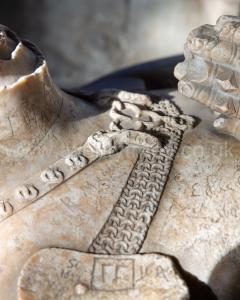
Detail of Lancastrian Esses Collar and the trefoil fixing holding the Lancastrian Esses Collar to the bottom of the Camail.
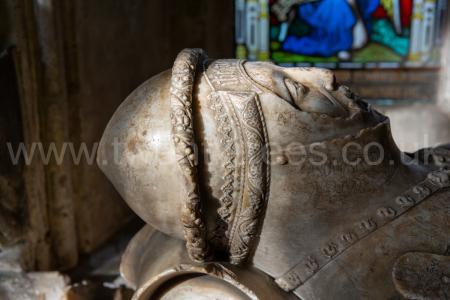
Detail of IHC NASARE Lettering and Decorated Orle and decorated Vervelle Cover. Bascinet with Gorget. Lancastrian Esses Collar.
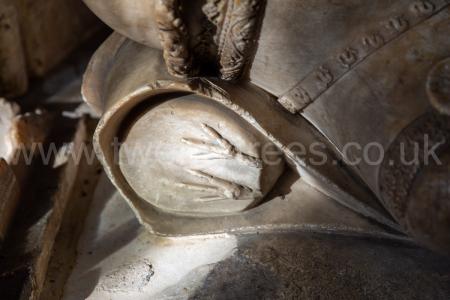
Detail of the Ros Peacock Crest which surmounted his Great Helm; only the feet remain.
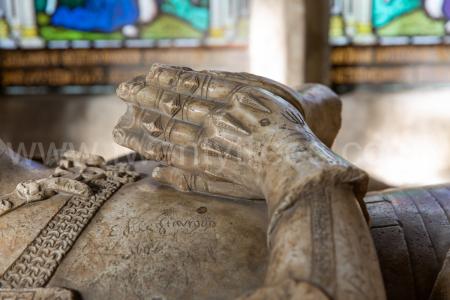
Detail of the Hourglass Gauntlets and graffiti.
In 1436 John Greystoke 4th Baron Greystoke (age 47) died. He was buried at St Andrew's Church, Greystoke [Map]. His son Ralph Greystoke 5th Baron Greystoke (age 22) succeeded 5th Baron Greystoke. Monument in St Andrew's Church, Greystoke [Map]. Fluted Period. His Pauldrons are unusual in their style. His arms are fully encased in plate with a couter (or coude) protecting the elbow joint. Fine detail of the straps that held the armour in place may be seen on the underarms. A gorget, has replaced the camail. His head is, very unusually, bare as is his face, his hair cut in the style so typical of portraits of Henry V. The effigy was possibly made somewhat after John's death or, possibly, that the effigy has been incorrectly assigned. His head rests on the decorated tournament helm. He wears the Lancastrian Esses Collar. John had supported the usurpation of Richard II by Henry IV in the 1390s; staunch Lancastrians. John had married, in 1407, Elizabeth Ferrers, daughter of Joan Beaufort, daughter of John of Gaunt, son of King Edward III. Two sword belts: diagonal (bawdric) and horizontal. The jupon, beneath the waist has been replaced by a fauld; horizontal strips of metal that wrap around.
John Greystoke 4th Baron Greystoke: In 1389 he was born to Ralph Greystoke 3rd Baron Greystoke and Catherine Clifford Baroness Greystoke. On 28 Oct 1407 John Greystoke 4th Baron Greystoke and Elizabeth Ferrers Baroness Greystoke were married at Greystoke Castle, Cumberland. She by marriage Baroness Greystoke. She the daughter of Robert Ferrers and Joan Beaufort Countess of Westmoreland. She a great granddaughter of King Edward III of England. On 06 Apr 1418 Ralph Greystoke 3rd Baron Greystoke died. He was buried at Newminster Abbey. His son John Greystoke 4th Baron Greystoke succeeded 4th Baron Greystoke.
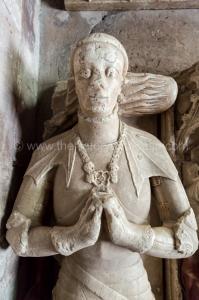
Introduction. The third period inclosed the body from head to loot in plate of steel, and the chain-mail only makes its appearance at the or armpit joints of the armour, either as gussets, or worn under-neath, as a haubergeon, or lighter shirt of maila. The camail, or gorget of mail, so called from its being attached by a lace to the basinet, or cap, was, on account of the pliability which it afforded to the motion of the neck, at first retained, but was ultimately displaced by a gorget of plate. To the breastplate the protuberant form of a pigeon's breast was given, particularly well calculated to glance off the thrust of a spear, and to prevent the body from being injured by blows causing deep indentations in the armour. The term hauberk seems to have been used either for the corselet, or body-armour of mail or of plate. Chaucer thus describes the armour of a knight, in his 'Rhime of Sir Thopas':
'He did on next his white lere
Of cloth of lake full line and clere,
A breche, and eke a sherte.
And next his sherte an hakaton,
And ovir that an hagergeon
For percing of his herte;
And over that a fine hauberke
Was all ywrought of Jewis werke;
Full strong it was of plate.
And ovir that his cote-armure.
As white as is the lilly-floure.
In which he would debate.
His shelde was all of gold so redde
And thereon was a boris hedde;
A carboncle beside.
* * * * * *
His jambeux were of cure bulyb;
His swordis shethe of ivory;
His helm of laton bright;
His sadell was of ruell bonec;
His bridle as the sunne yshone.
Or as the moone ylight;
His spere was of the hne cypres.
That bodeth warre, and nothing pece.
The hedde full sharpe igrounded."
Note a. In Dr. Mcyrick's line collection of ancient arms and armour, we see a figure wearing the habergeon of mail over the hauberk of plate. This does not appear to accord with the arrangement of the harness on Chaucer's night; but both modes were no doubt adopted, according to the pleasure of the wearer.
Note b. Cuir bouilli was extensively used in armour. The corselet, or body-armour, superadded to the hauberk, was at first composed of it, and in the term cuirass we have etymological record that it was so employed; and plastron implies a defence of leather, sitting as close to the breast as a plaister. The figure of John of Eltham may be considered to afford a good example of plate and leather-armour intermixed. Du Cange, in his Notes on Joinville, cites a very curious inventory of the armour necessary for a knight, which will be found to corroborate the above remarks: "Premierement, un harnois de jambes covert de cuir comme a esguillettes, ou long de la garnbe jusques au genouïl, et deux attaches large pour son barrueir (breeches), et souleres values (qu. velours?) attaches au gruës (greaves).
"Item. Cuisses et poullains (knee-plates) de cuir, armoiez de Varennes, des armes au chevalier.
"Item, un chausse de mailles par-dessus le harnois de jambes, attachée au braier, comme dit est par-dessus les cuisses (this was, perhaps, the gipon, jupon, or little petticoat of mail), et uns esperons dorez qui sont attachez a une cordelette autour de la jambe, afin que la molette (rowel) ne tourne dessous le pied.
"Item, pans et manchez, qui sont attachez a la cuirie (cuirass, leather corselet) a tous ses esgrappes sur les espaules, et un seursliere (sous cervelliere or camail) sur le pis (breast) avant.
"Item, bracheres a tout le harnois (qu. bracers or straps for the whole harness?) et le han escucon de la banniere sur le col (shield of his banner or arms slung from the neck), couvert de cuir, avec les tonnerres pour les attacher au braier a la cuirie, et sur le bacinet une coiffe de mailles, et un bel orfroy par devant le front qui veut (qu. a circlet ornamented in front with goldsmiths' work; see effigy of William de Valence).
"Item, bracellets attachez aux espaules de la cuirie (qu. brassarts, arm-plates, fastened to the cuirass at the shoulders?)
"Item, un gaigne pain pour mettre es mains du chevalier (a sword for the knight's hand, here called by a nickname in general use, a 'bread-earner').
"Item, un heaume et le tymbre (crest), tel comme ll voudra.
"Item, deux chains a attachier a la poitrine de la cuirie, une pour Tepee, Tautrepour le baston, en deux vigeres, pour le heaume attacher. (Two chains; one to fasten the sword to the breast of the cuirass, another having some contrivance of a stick to attach the helmet in the same way.)
Note c. Ruell-bone; bone or stained with divers colours.
Note d. The following passage of Froissart will afford an idea of the power of a sharp-ground lance: "Among the Cambresians was a young squire from Gascony, called William Marchant, who came to the held of battle mounted on a good steed, his shield hanging to his neck, his lance in its rest, completely armed, and spurring on to the combat. When Sir Giles Manny saw him approach, he spurred on to meet him most vigorously, and they met, lance in hand, without fear of each other. Sir Giles had his shield pierced through, as well as all the armour near his heart, and the iron passed quite through his body."—Johnes's Translation, 8vo, vol. 1. p. 169.
The armour of the Early Plate Bascinet and Gorget Period was developed after experience in battle had shown the throat vulnerable. A gorget was added, attached to the bascinet, to protect the throat.